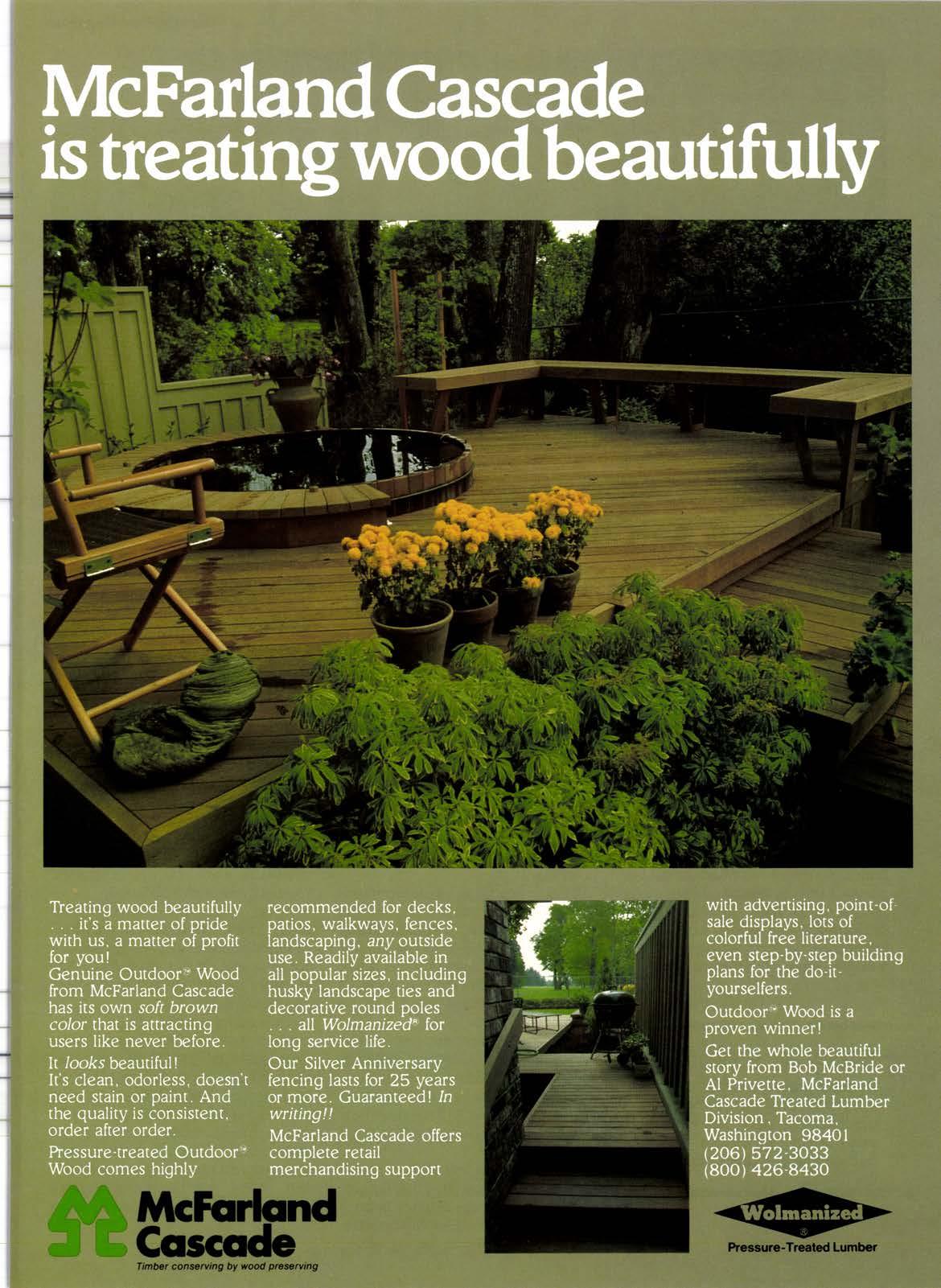
1 minute read
Sforyat a Glance
Long llfe pressure treated wood . . two groups of pre. servatives rapidly evolving market back-up promotion.
wood are not able to truly perform in direct ground contact or in high exposure, high-risk situations. Redwood is an excellent product and for decades it has provided a wide range of products to national consumer markets; but, with second and third growth stumpage entering the marketplace, there is a much higher incidence of sapwood. Sapwood provides little or no natural protection against decay, rot, or insect attack.
Groundline moisture in higher rainfall areas is a notorious culprit in rapidly decaying fence posts. In areas of high termite infestation like California, redwood posts sold in sap-common grades are also showing signs of early failure, usually in five to seven years.
Thus, there is a rapidly evolving place for pressure treated wood in our markets. With proper controls at the pressure treating plant, clean, well presented products are emerging for your consideration. Pressure treated wood products that have been developed for these markets are readily available, attractive in appearance, and sold in commonly used sizes and lengths.
There are excellent marketing programs to assist the retail dealer in promoting these products successfully. Ask your supplier.
Dealers should be especially aware of these two key terms when reviewing any product line for their yard: retention and penetration. The terms are closely linked and absolutely vital to a sound merchandising program. Together in proper combination, they are the key to long service life and the success of the merchandising program.
Retention is the amount of preservative deposited in the wood as a result of pressure treating process. Applicable standards allow for three basic levels. Higher levels are provid-









